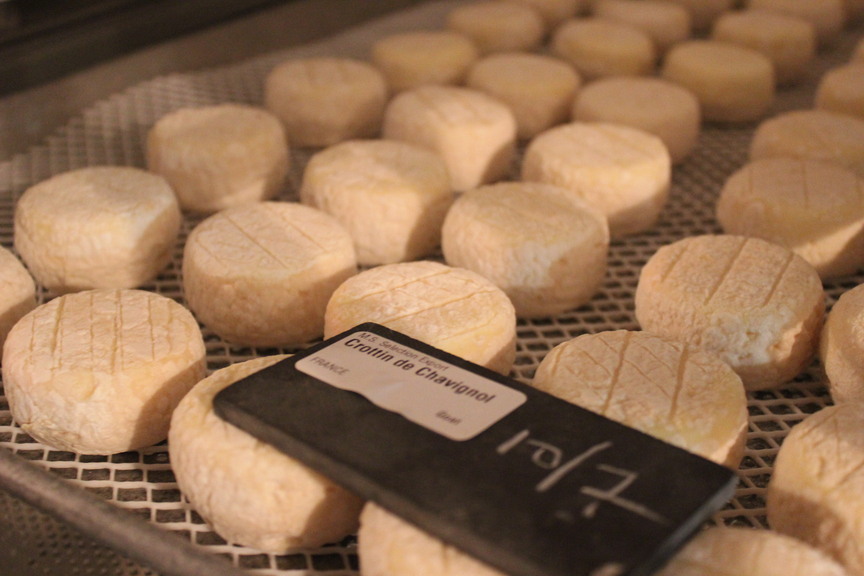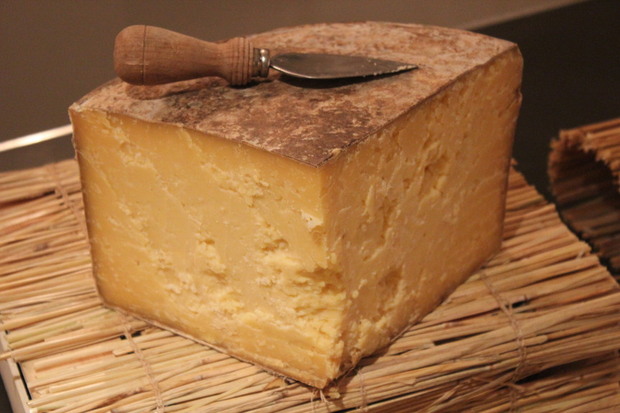
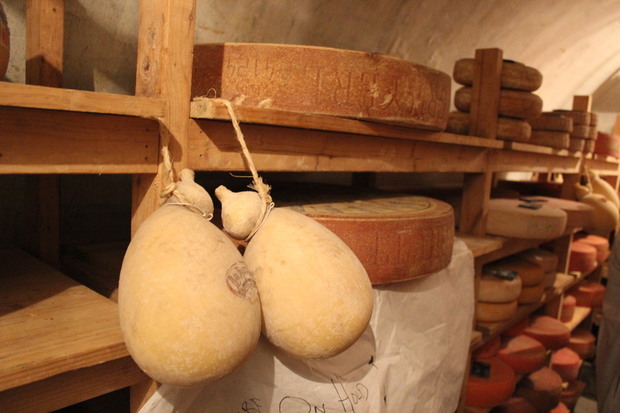 Caciocavallo (basically aged provolone) hanging in the hard cheese cave at Murrays
Caciocavallo (basically aged provolone) hanging in the hard cheese cave at Murrays
Last Sunday we took advantage of a special weekend where Murray’s Cheese opened their cheese caves for hour-long tours and tastings. Each session included a tasting of six cheeses, a glass of champagne and a guided tour of the aging facilities beneath the cheese shop on Bleecker St in Manhattan’s West Village. For $15 it was a steal. We also ran into the intern (Nora) who organized the Vermont Cheesemaker’s Festival at Shelburne Farms, where we volunteered this past summer. She’s now a cheesemonger at Murray’s, so catching up with her was fun.
Six Cheeses from Around the World
Above the cheese counter in the rear of Murray’s flagship location there’s a small kitchen/event center where our tour group was hosted. We were greeted with a glass of champagne, a spread of six fantastic cheeses (all aged in Murray’s caves) and a quick lay of the land. On tap for the afternoon were a couple goat-cheese bloomy rinds (A cave-special wrapped in bourbon-soaked apple leaves and the Spanish Leonora), an Epoisses (salty, funky washed rind), Pyrenees Brebis (pasteurized sheep milk), Cabot Clothbound Cheddar ('nuff said), and Colston Bassett Stilton (a salty, British blue).
We started the tasting with the NY Big Apple, which is a Murray’s specialty, and was excellent. Murray’s takes a young bloomy rind made from NY goat’s milk, scavenges apple tree leaves in Brooklyn, soaks the leaves in a pear brandy mix and wraps the cheeses for aging in the caves. Next up was Leonora (our favorite). Shaped like brick with soft white mould (p. candidum) and a silky smooth interior, this Spanish goat cheese did not disappoint. It was definitely one of the best bloomy rinds we’ve ever tasted. The Epoisses came next and was a bit too salty for my taste (as was the Stilton), but Sweetbreads thought those were fantastic and couldn’t get enough. Aged cheddars top my list of cheeses, so I was excited to try more of Cabot’s Clothbound, it is always a treat. The Pyrenees Brebis was totally lost amongst the more intense flavors, but it did have a nice nutty flavor we enjoyed.
All in all the cheeses were fantastic and all of them had been aged for at least part of their life in Murray’s caves.
On To The Caves!
We donned our hair-nets and booties and headed down to the caves. Murray’s subterranean cave system consists of three serious cheese caves, two caves that are more geared toward cheese storage and a couple rooms for packing, shipping and storing dry-goods. I say three “serious” cheese caves because there were clearly three specific caves primarily dedicated to the art of maturing and aging cheeses (aka "affinage"). Vaulted ceilings, curved wall-corners and open-aired cheeses were on display. The cave-master (or affineur) and other Murray’s helpers tend to the cheeses in the caves by flipping them, washing them, and helping them age to perfection. The other “storage” rooms were mostly cheeses still in the shipping boxes waiting to be unpacked or sent up to the counter. Of the three cheese caves, one was for bloomy rinds (all on stainless steel racks), one was for washed rinds (stinky!), and one was for harder and longer-aged cheeses (wooden racks, huge wheels, totally awesome).
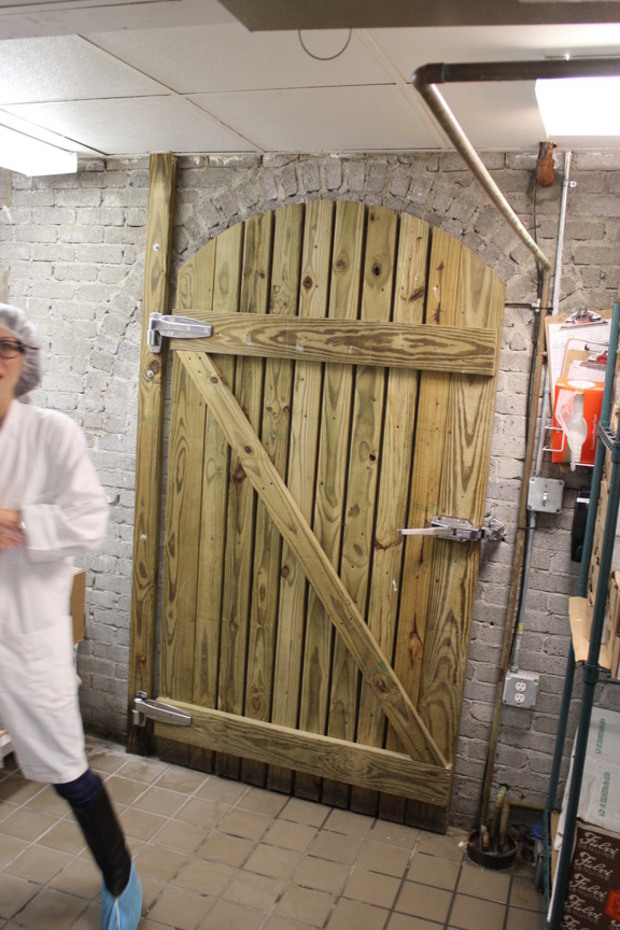 Entrance to one of five caves and our lovely (and blurry) host Beth Ann
Entrance to one of five caves and our lovely (and blurry) host Beth Ann
My favorite cave was the bloomy rind cave. For some reason I’m really coming around to bloomy rinds recently and I never used to be a big fan. Row after row of all the best bloomy rinds in the world was really cool to see. Little pyramids, long log shapes, tall circular cheeses. Even one that looked like a giant meringue poof. Lots of moldy goodness going on in there. Bottom on my list was the washed rind cave which has a very powerful ammonia smell, as you could imagine. It’s natural, and nothing to be concerned about, but just not my wedge of cheese. Sweetbreads, on the other hand, loves the stinky stuff and had a great time scoping out the cave and eating all the Epoisses she could get her hands on.
What about the NY Times Affinage debate?
What would an article on Murray's be without at least some acknowledgement of the recent NY Times affinage controversy? So here's our two cents: it's silly. A week or two ago the NY Times published an article stirring up debate about whether affinage adds value or if it's just smoke and mirrors. Clearly, true affinage is critical to good cheese and the debate was really more about whether what certain cheesemongers are doing is really "affinage" (actually aging the cheeses from an undeveloped state to a mature, or peak state), or just good (or bad) cheese care (i.e. not letting the cheeses get to wet, dry, too far off-peak, etc).
In certain instances Murray's is taking in young cheeses and aging them in the caves for the cheesemaker. That is affinage. In other instances Murrays may take a cheese out of the box and realize the cheese is wet and needs to be dried out or cared for in another way to make it perfect. That is good cheese care. Other times Murray's puts the cheese in cold storage while they wait to put it behind the counter. Also cheese care. The hubbub seemed to be confusion over semantics and a lack of understanding for what Murray's really is and isn't doing. I'll tell you one thing, the six tastings we had (and about ten more at the counter before we left) were all quite tasty!

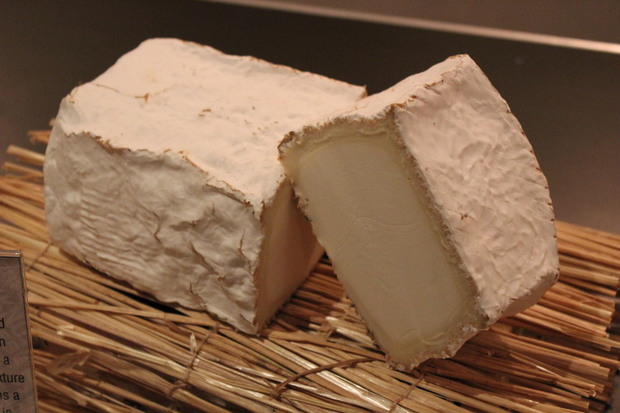 Our favorite, Leonora
Our favorite, Leonora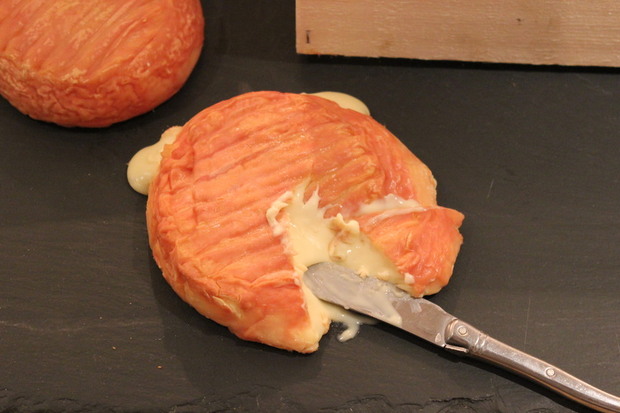 The legendary Epoisses
The legendary Epoisses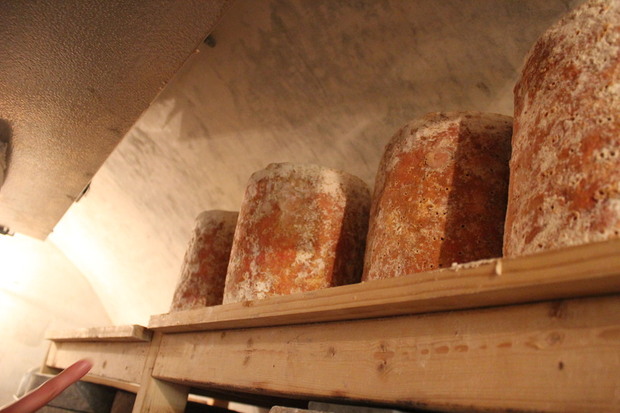 Stilton on the aging racks
Stilton on the aging racks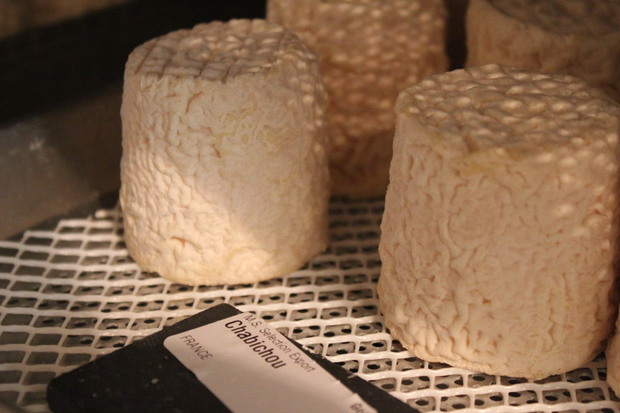 French bloomy rind, Chabichou
French bloomy rind, Chabichou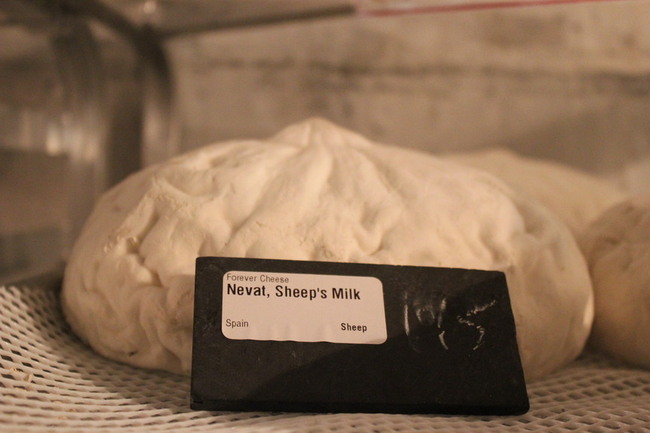 The Nevat meringue-shaped cheese
The Nevat meringue-shaped cheese